Golden perennials bring a warm, radiant touch to any garden, offering vibrant color that lasts through multiple seasons. These plants are perfect for adding brightness and depth to your landscape, especially when you’re looking for something that will stand out from spring all the way into fall. Their striking yellow and gold tones catch the light in beautiful ways, making them a showstopper in any garden design.
What’s great about these golden beauties is that they come back year after year, filling your space with consistent color without the need for constant replanting. They’re an excellent choice for gardeners looking to create a garden with layers of color, texture, and long-lasting appeal. From early blooms to late-season color, these golden perennials will keep your garden looking vibrant for months.
Goldenrod
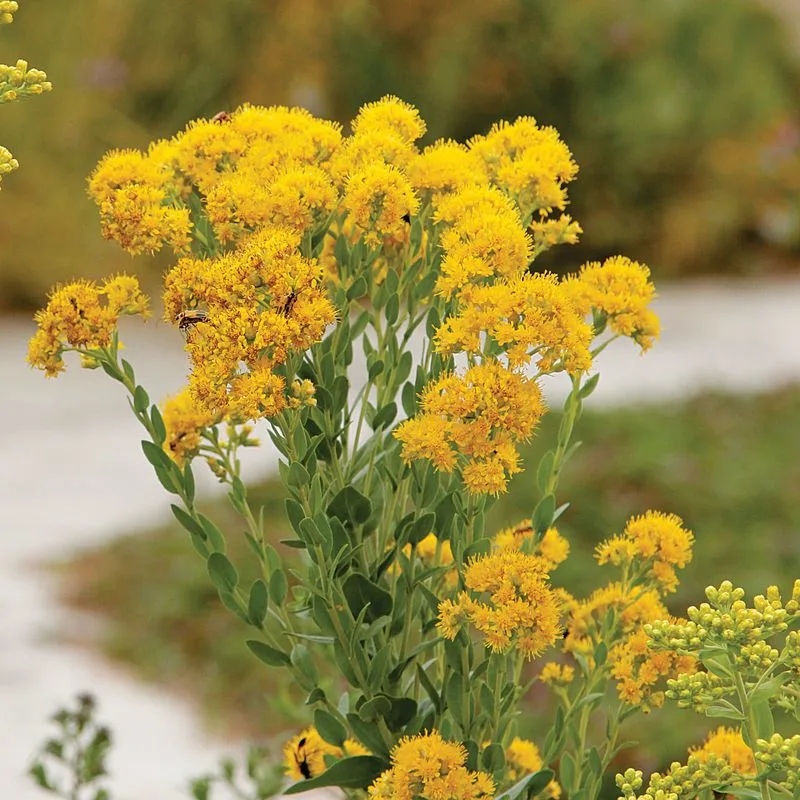
Goldenrod graces gardens with its bright, golden-yellow plumes. This perennial thrives in sunny, well-drained locations, attracting pollinators like bees and butterflies. Its upright stems can reach up to four feet, creating a striking vertical accent. Plant Goldenrod in clusters to enhance its visual impact. Despite its common association with allergies, Goldenrod pollen is not airborne. Instead, the blooms offer a rich nectar source. Pair with purple asters for a stunning color contrast. Goldenrod’s late-summer to fall bloom time ensures your garden remains vibrant even as the days grow shorter.
Yellow Coneflower
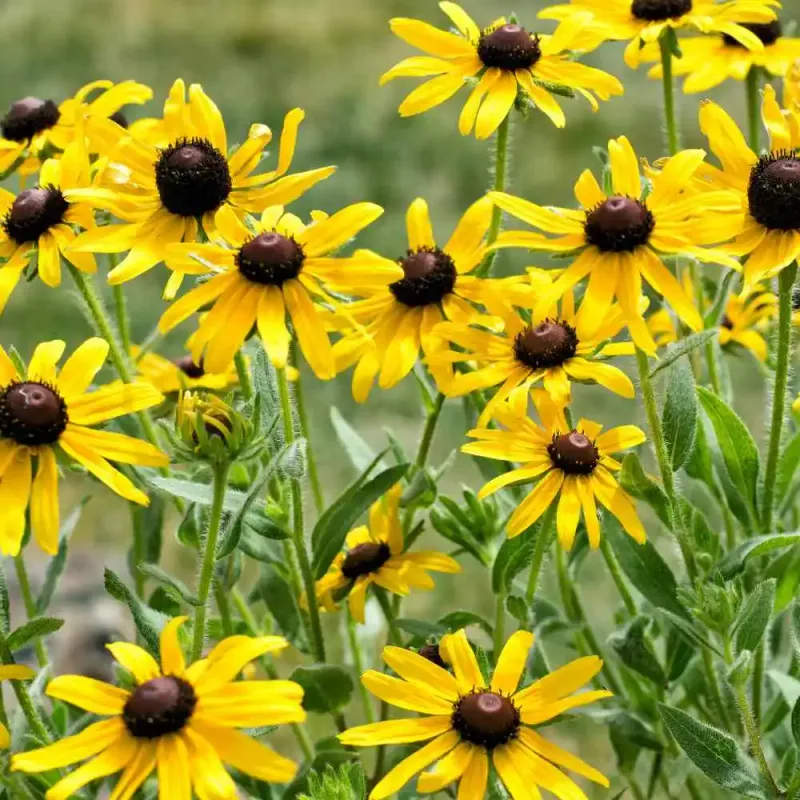
Yellow Coneflower, also known as Echinacea paradoxa, adds a cheerful touch with its sunny petals. This perennial stands out with its drooping flower heads and prominent brown centers. Preferring full sun and well-drained soil, it reaches heights of up to three feet. Its drought-tolerant nature makes it ideal for low-maintenance gardens. Yellow Coneflower’s golden blooms appear in mid-summer and persist into fall. Combine with grasses for a prairie-inspired look. Regular deadheading encourages more prolific flowering. Its seeds offer food for birds, adding another layer of life to your garden year-round.
Coreopsis
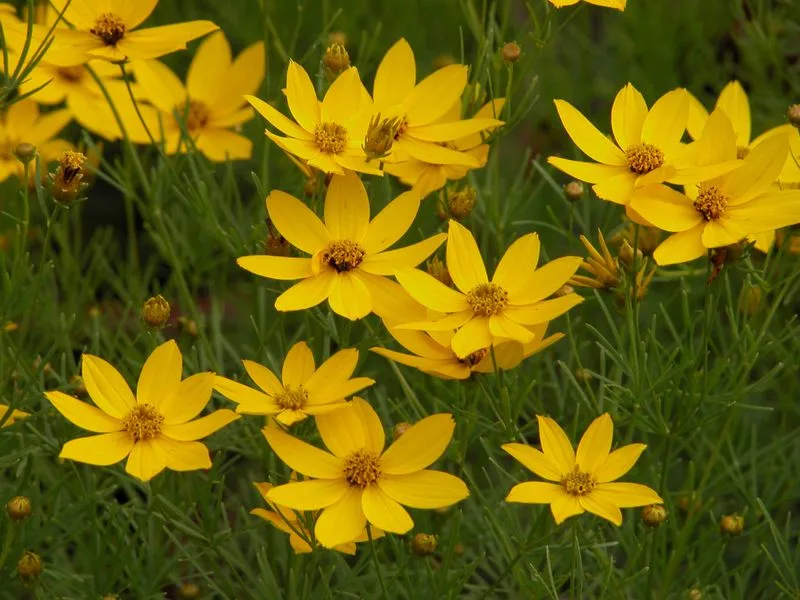
Coreopsis, commonly known as Tickseed, is a garden favorite for its bright, daisy-like flowers. Thriving in full sun, this perennial reaches heights of up to two feet and blooms from early summer to late fall. Coreopsis is easy to grow, requiring minimal care once established. Its cheerful yellow flowers attract butterflies, enhancing the garden’s ecological value. Pair with lavender for a striking color contrast. Regular deadheading prolongs its blooming period. This plant’s resilience against pests and diseases makes it a reliable choice for gardeners seeking vibrant, long-lasting color.
Black-eyed Susan
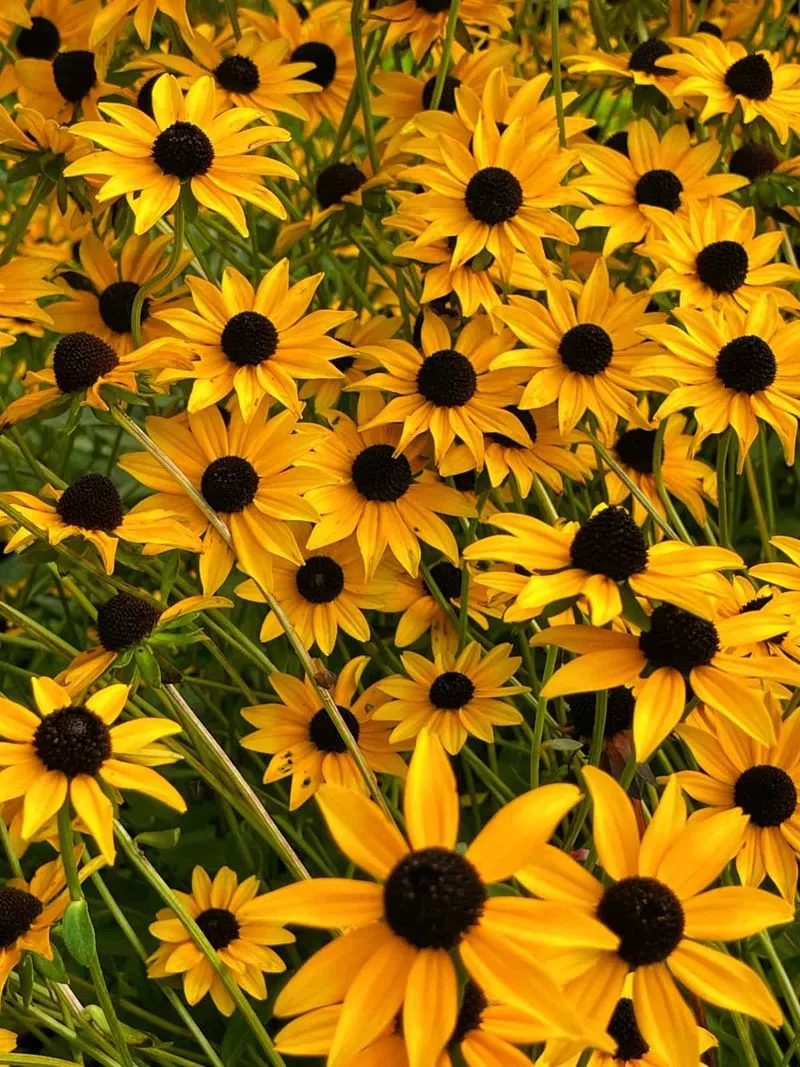
Black-eyed Susan, or Rudbeckia, is a staple in many gardens, known for its bright yellow petals and dark center. This hardy perennial thrives in full sun, growing up to three feet tall. Its long blooming period, from mid-summer to fall, ensures a lasting splash of color. Black-eyed Susans are drought-tolerant and easy to maintain. They attract a variety of pollinators, including bees and butterflies. Plant in masses for a bold statement, or mix with other perennials for a harmonious landscape. Their seed heads provide winter interest and food for birds.
Daylily
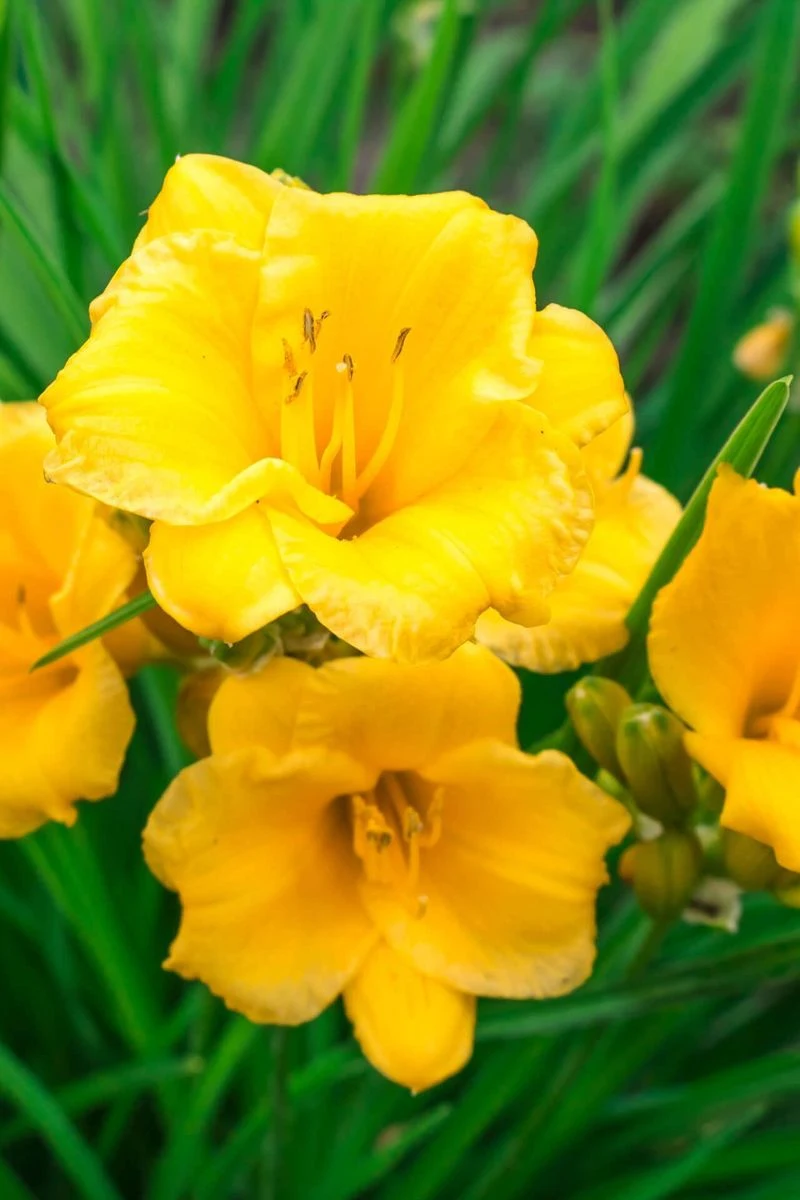
Daylilies are prized for their vibrant, trumpet-shaped flowers. Blooming from early summer to fall, they bring continuous color to gardens. Each bloom lasts just a day, but plants produce multiple buds for an extended display. Daylilies prefer well-drained soil and full sun. They’re highly adaptable, tolerating various soil types and conditions. Their golden hues pair beautifully with purple salvia or ornamental grasses. Regular division every few years keeps them healthy and encourages more blooms. Daylilies’ low-maintenance nature makes them a favorite among busy gardeners seeking reliable beauty.
Golden Marguerite
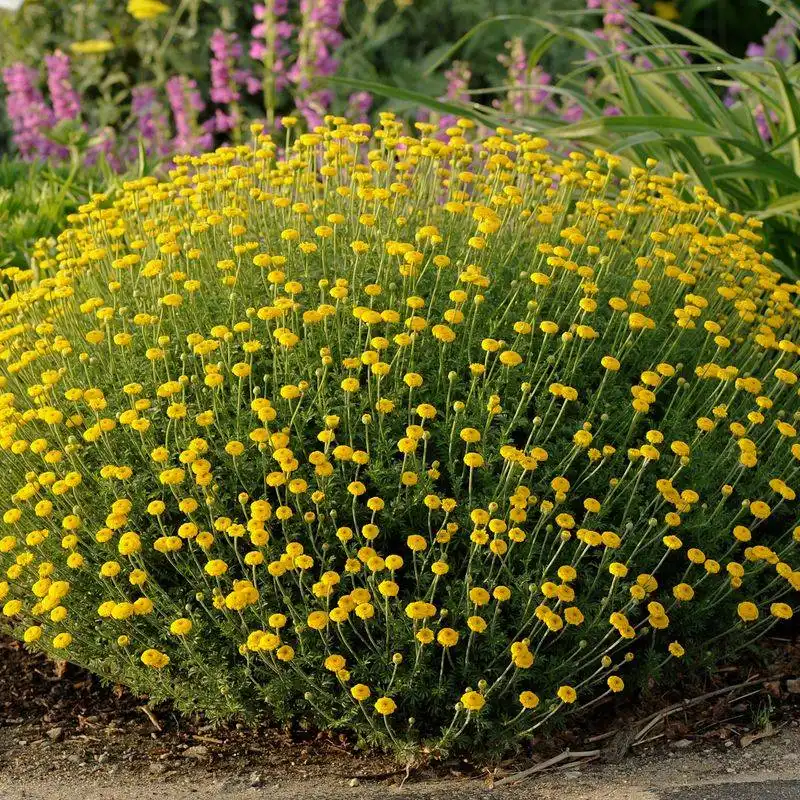
Golden Marguerite, or Anthemis tinctoria, adds a sunny charm to any garden with its bright yellow, daisy-like blooms. This perennial thrives in full sun and well-drained soil, growing up to three feet tall. Its fern-like foliage adds texture and interest even when not in bloom. Golden Marguerite blooms from late spring into early fall, attracting butterflies and other pollinators. Regular deadheading encourages continued flowering. It’s perfect for borders or cottage gardens, offering a splash of color that complements other perennials. Its drought tolerance makes it ideal for low-maintenance landscaping.
Yarrow
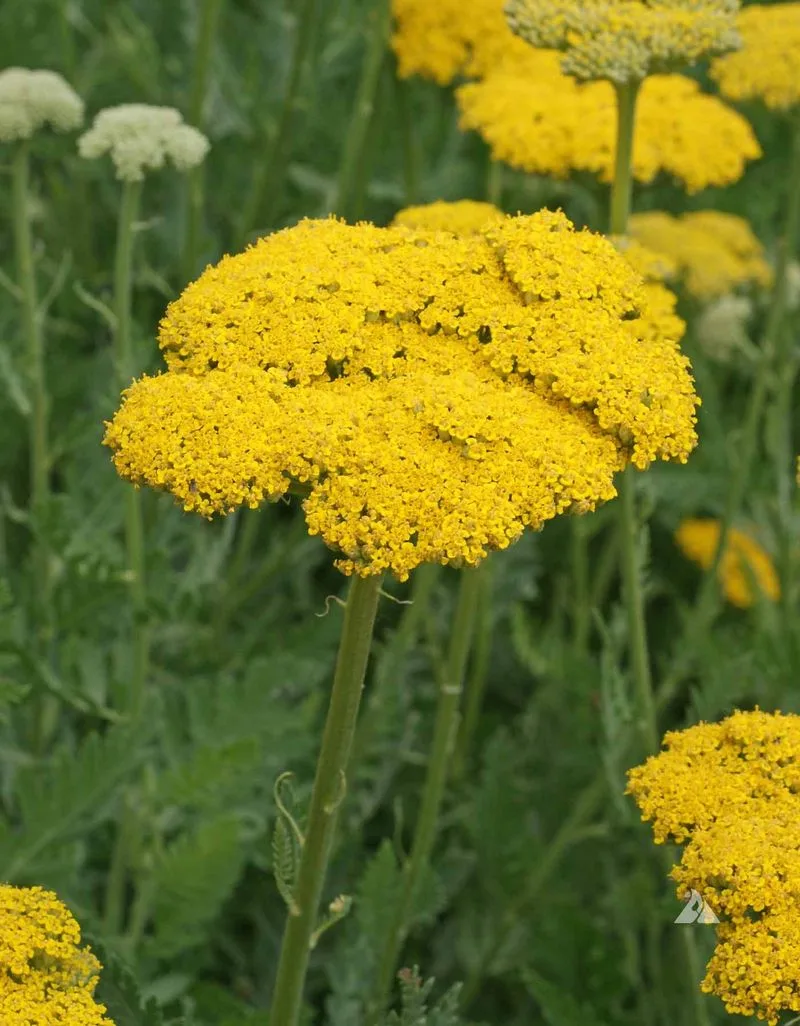
Yarrow is a versatile perennial known for its flat clusters of tiny yellow flowers. Its long blooming period, from late spring to fall, makes it a garden staple. Yarrow thrives in full sun and well-drained soil, reaching heights of up to three feet. Its fern-like foliage adds a delicate texture to garden beds. This plant is drought-tolerant and deer-resistant, ideal for sustainable landscapes. Yarrow attracts beneficial insects, enhancing a garden’s biodiversity. Combine with purple coneflowers for a striking contrast. Regular trimming maintains its shape and encourages repeat blooms.
Chrysanthemum
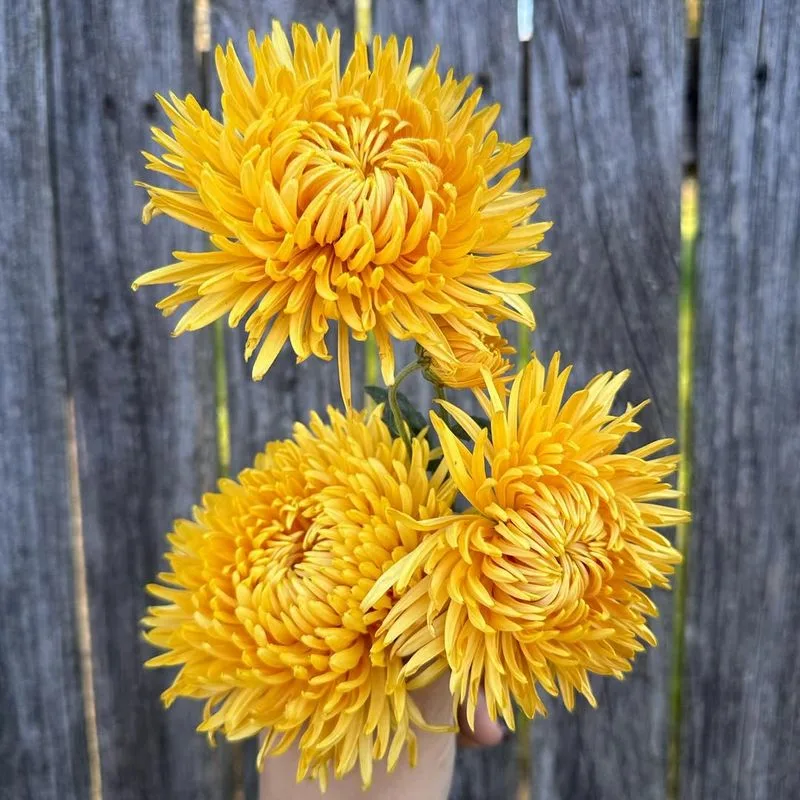
Chrysanthemums, often called mums, are renowned for their late-season blooms. These perennials offer a spectacular burst of color in autumn gardens. With golden varieties, they light up landscapes with their sunny disposition. Chrysanthemums prefer full sun and well-drained soil. They grow up to two feet tall and form mounds of vibrant flowers. Regular pinching back in early summer promotes bushier growth. Mums are perfect for adding fresh color to fading gardens. They pair beautifully with asters and ornamental grasses. Their long-lasting blooms make them a favorite for fall landscaping and floral arrangements.
Golden Hellebore

Golden Hellebores, or Lenten Roses, bring early spring cheer with their delicate, nodding flowers. These perennials prefer partial to full shade and well-drained soil. Golden varieties illuminate shady spots with their soft yellow blooms. Hellebores are evergreen, providing year-round interest. Their leathery foliage is an attractive feature even when not in bloom. They grow up to 18 inches tall and form clumps that spread over time. Golden Hellebores are deer-resistant and low-maintenance, ideal for woodland gardens. Pair with ferns for a lush, textured garden display that thrives in shaded areas.
Golden Columbine
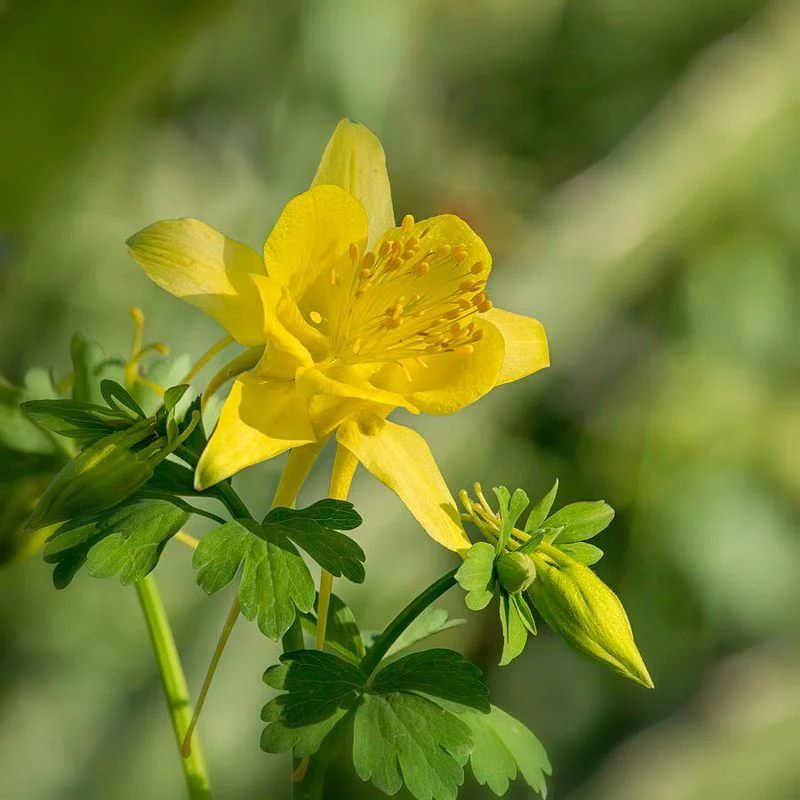
Golden Columbine, or Aquilegia chrysantha, enchants with its intricate, spurred yellow flowers. This perennial thrives in partial shade and well-drained soil, blooming from late spring to early summer. Its delicate appearance belies its hardy nature. Golden Columbine attracts hummingbirds, bringing added life to the garden. It grows up to two feet tall, making it suitable for borders and woodland gardens. Pair with bluebells for a harmonious color palette. Regular deadheading extends its blooming period. Its airy foliage adds a gentle texture, enhancing the overall aesthetic of shaded garden spaces.
Golden Creeping Jenny
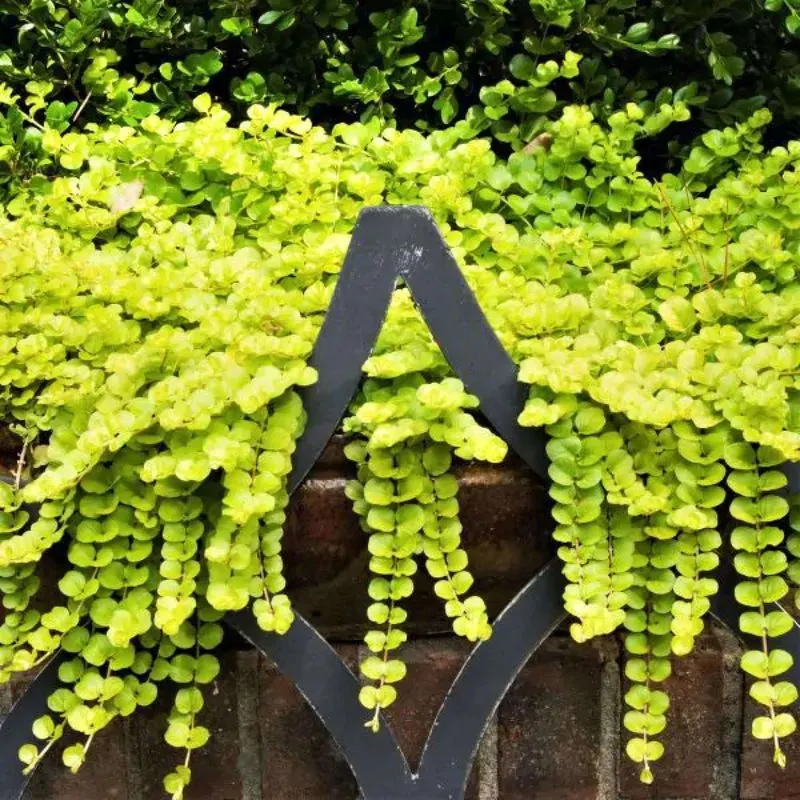
Golden Creeping Jenny, or Lysimachia nummularia ‘Aurea’, offers a bright, cascading ground cover. Its round, golden leaves create a lush carpet that thrives in partial sun to shade. This perennial is perfect for softening edges and filling in gaps between stones or in containers. Its vibrant foliage remains attractive from spring to fall, adding consistent color. Golden Creeping Jenny is low-maintenance and spreads easily, making it ideal for large areas. Keep its growth in check with regular pruning. Pair with dark-leaved plants for striking contrast and visual interest in garden designs.
St. John’s Wort
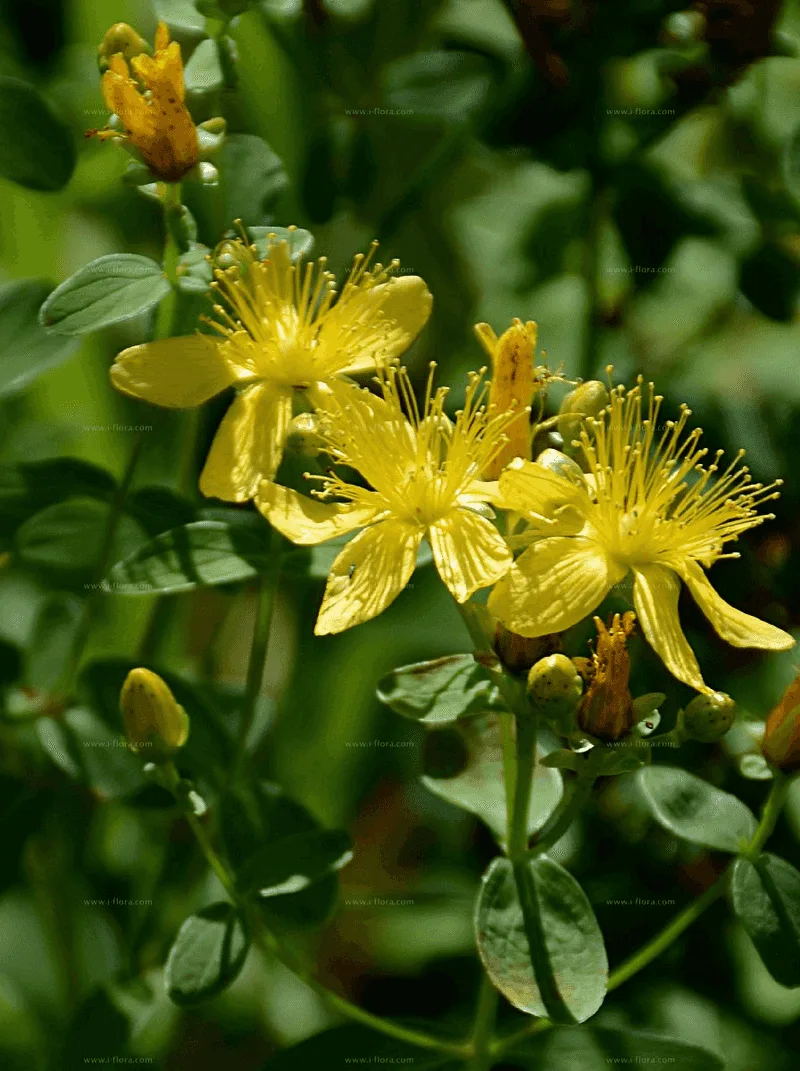
St. John’s Wort is known for its star-shaped, bright yellow flowers. This perennial shines in sunny locations with well-drained soil. Blooming from midsummer to fall, it adds a cheerful touch to gardens. St. John’s Wort reaches up to two feet tall and forms compact mounds. Its medicinal properties make it a popular choice for herbal gardens. Pair with purple sage for a complementary color scheme. St. John’s Wort attracts bees and butterflies, enhancing garden biodiversity. It’s easy to grow and maintain, making it a valuable addition to both ornamental and functional garden spaces.
Golden Japanese Forest Grass
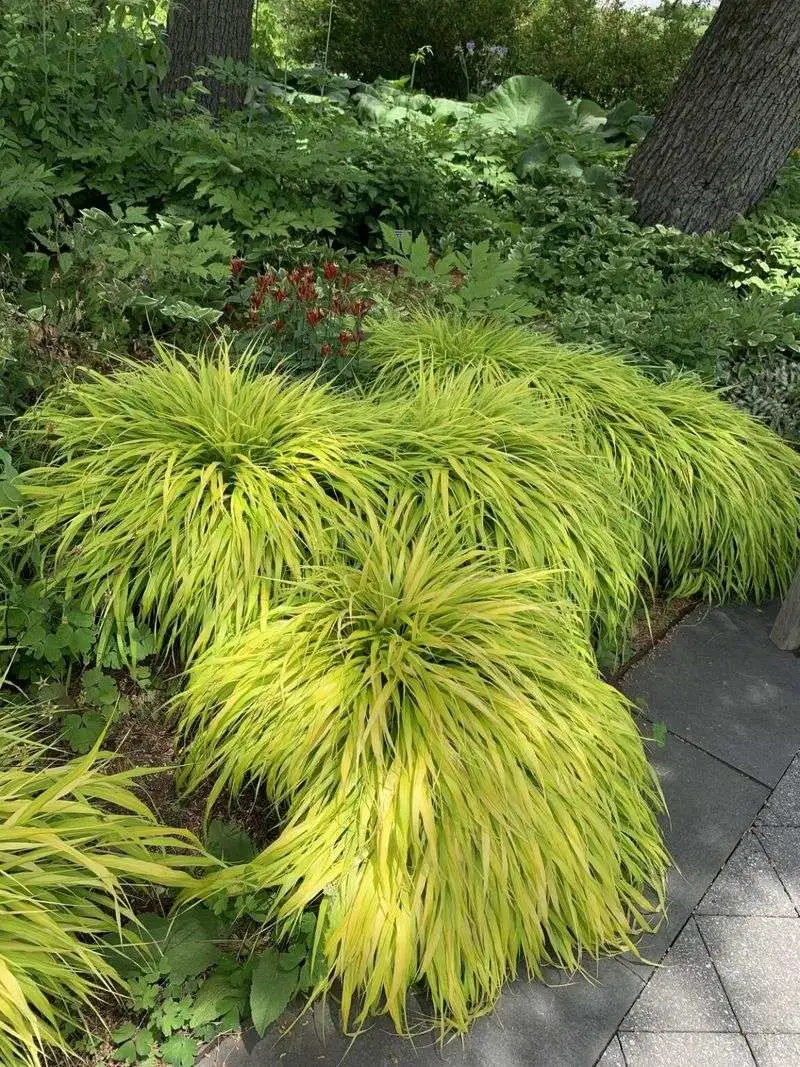
Golden Japanese Forest Grass, or Hakonechloa macra ‘Aureola’, offers a graceful, flowing appearance with its arching yellow-green blades. This perennial thrives in partial to full shade, adding movement and texture to garden designs. It’s perfect for woodland gardens, borders, or containers. The golden tones of its foliage provide season-long interest, turning orange in the fall. This grass grows up to 18 inches tall, forming elegant mounds. Pair with hostas for a lush, layered effect. It’s low-maintenance and deer-resistant, ideal for gardeners seeking a subtle, yet striking addition to shaded areas.
Golden Variegated Sweet Flag
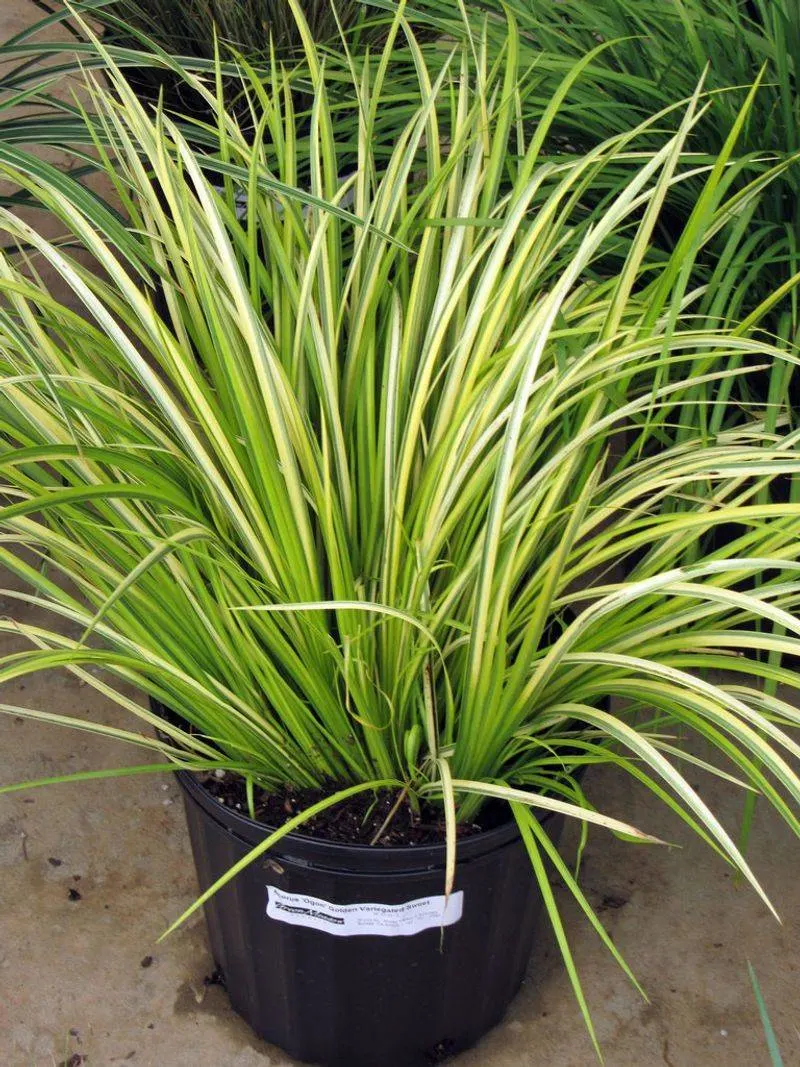
Golden Variegated Sweet Flag, or Acorus gramineus ‘Ogon’, is a versatile perennial with striking yellow-striped leaves. It thrives in moist, well-drained soil, making it ideal for bog gardens or water features. This plant grows up to one foot tall, forming dense clumps. Its vibrant foliage remains attractive year-round, offering continuous interest. Golden Variegated Sweet Flag is perfect for edging ponds or streams, adding a touch of brightness. Pair with water irises for a harmonious aquatic landscape. Its low-maintenance nature and deer resistance make it a practical choice for wet garden areas.
Golden Alyssum

Golden Alyssum, or Aurinia saxatilis, blankets gardens with a vibrant display of small, yellow flowers. This perennial thrives in full sun and well-drained soil, ideal for rock gardens or edges. Blooming in early spring, it creates a cheerful start to the growing season. Golden Alyssum’s gray-green foliage adds a subtle contrast to its bright blooms. It grows up to eight inches tall, forming low mounds. Pair with creeping phlox for a colorful spring tapestry. This plant is drought-tolerant once established, requiring minimal care, making it perfect for low-maintenance, sunny garden spots.
Golden Feverfew
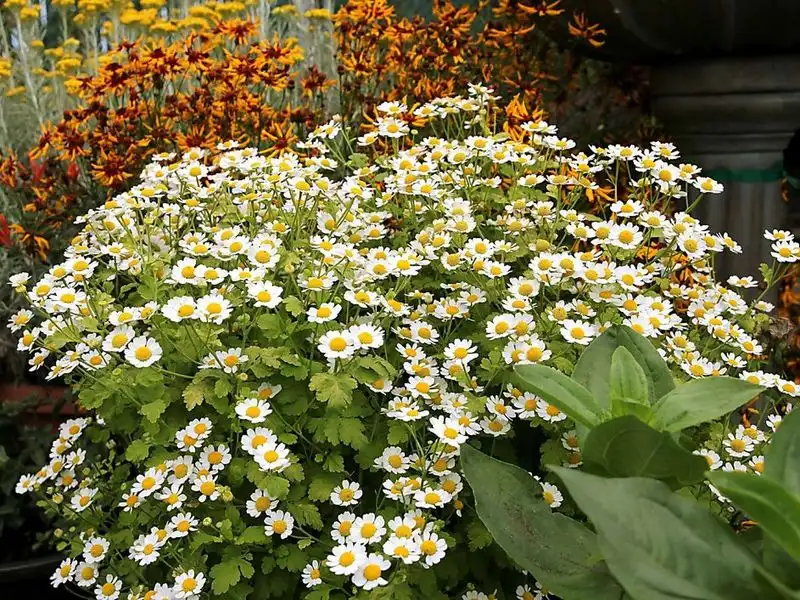
Golden Feverfew, or Tanacetum parthenium ‘Aureum’, is cherished for its small, button-like yellow flowers and feathery, aromatic leaves. This perennial thrives in full sun and well-drained soil, growing up to two feet tall. It’s a staple in herb gardens, known for its medicinal uses. Golden Feverfew blooms from early summer to fall, providing long-lasting color. Pair with lavender for an aromatic garden. Its bright foliage and compact form make it ideal for borders or containers. Regular deadheading encourages more blooms. This versatile plant is both ornamental and practical.
Goldenrod Hyssop
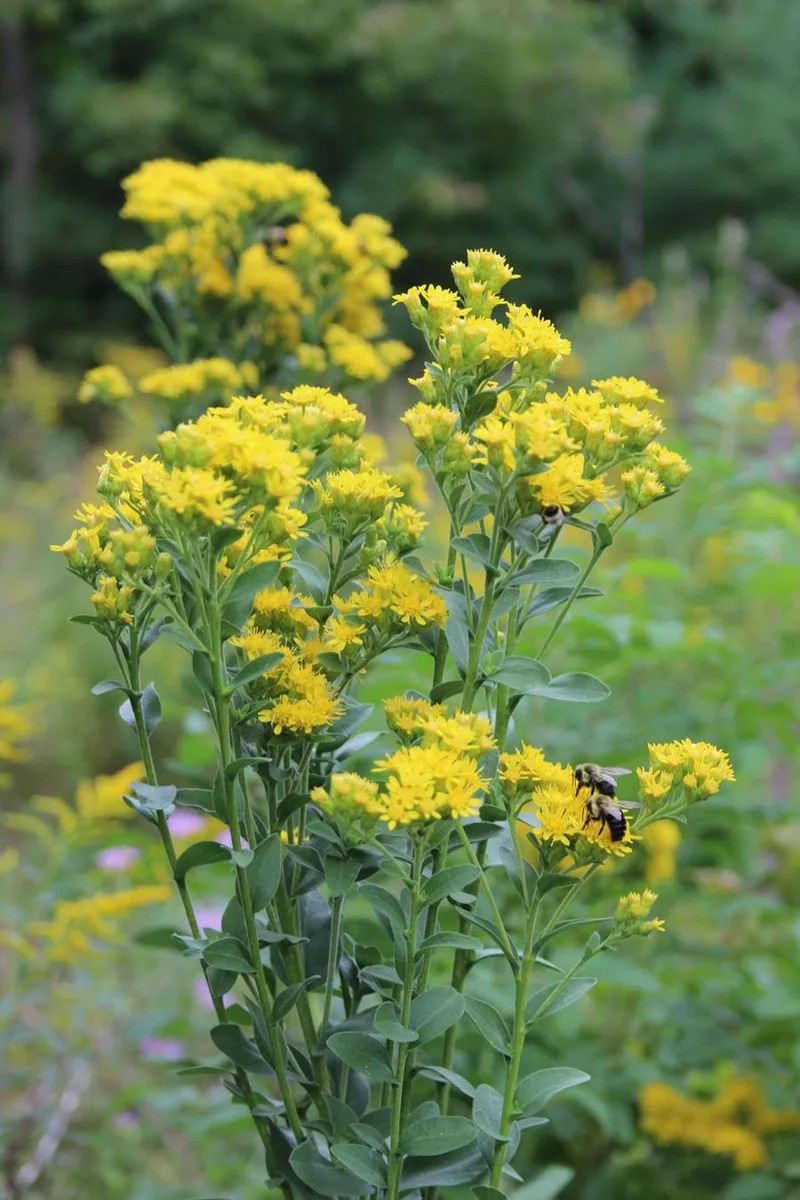
Goldenrod Hyssop, or Agastache ‘Golden Jubilee’, dazzles with its tall spikes of yellow flowers. This perennial thrives in full sun and well-drained soil, reaching up to four feet tall. Its aromatic leaves add a sensory dimension to gardens. Blooming from midsummer to fall, Goldenrod Hyssop attracts bees and butterflies, enhancing garden biodiversity. It’s perfect for wildflower gardens or borders, offering vertical interest. Pair with Russian sage for a complementary color and texture contrast. This plant is drought-tolerant and low-maintenance, making it ideal for gardeners seeking vibrant, hassle-free beauty.
Golden Creeping Thyme
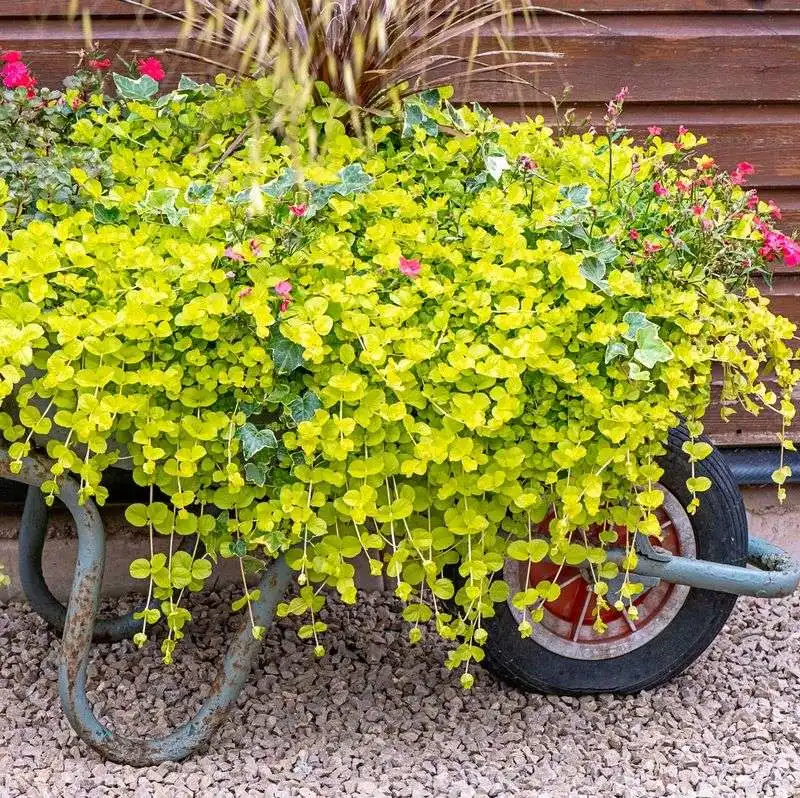
Golden Creeping Thyme, or Thymus serpyllum ‘Aureus’, offers a fragrant ground cover with tiny yellow flowers. This perennial thrives in full sun and well-drained soil, making it perfect for edging or between stepping stones. Blooming in early summer, it adds a splash of color and scent to gardens. Golden Creeping Thyme grows up to two inches tall, forming a dense mat. Pair with sedums for a low-maintenance landscape. Its aromatic leaves are edible, adding culinary value. This plant is drought-tolerant, making it ideal for sunny, dry areas where little else thrives.
Golden Oregano
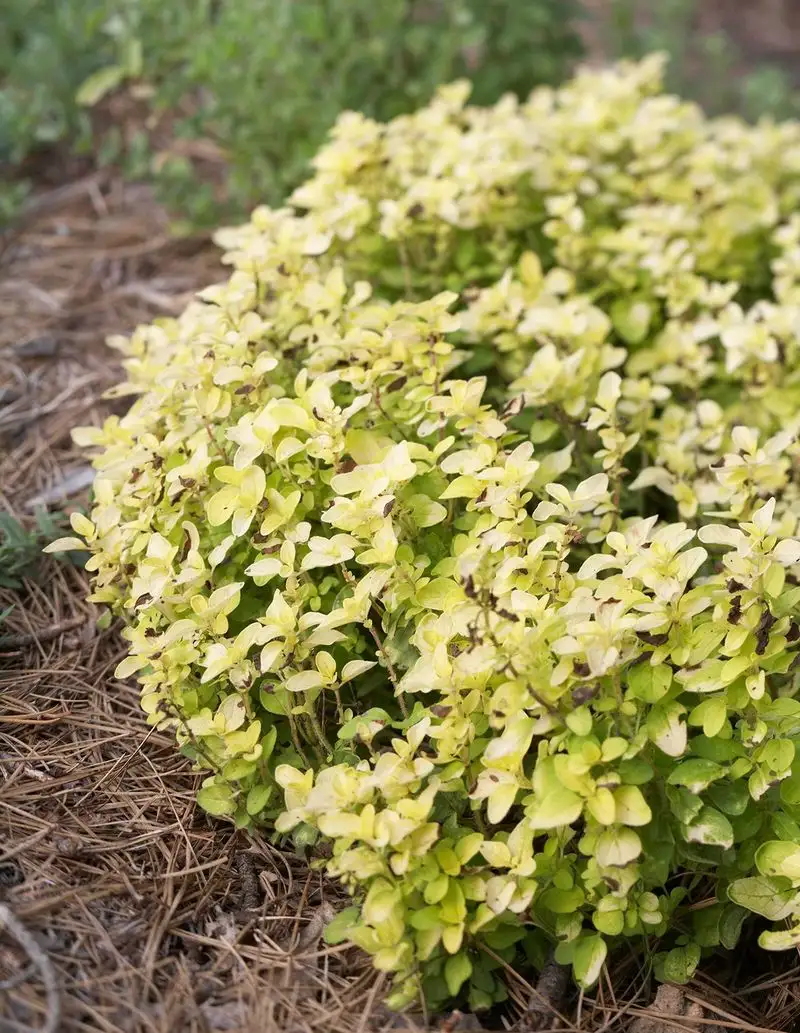
Golden Oregano, or Origanum vulgare ‘Aureum’, brings vibrant color to herb gardens with its bright yellow-green leaves. This perennial thrives in full sun and well-drained soil, growing up to one foot tall. Golden Oregano’s small white flowers bloom in midsummer, attracting pollinators. It’s perfect for culinary and ornamental purposes, adding flavor and beauty. Pair with chives for a productive kitchen garden. Its compact form and bright foliage make it ideal for borders or containers. Regular harvesting encourages bushy growth. This plant is hardy and easy to grow, providing color and utility.

